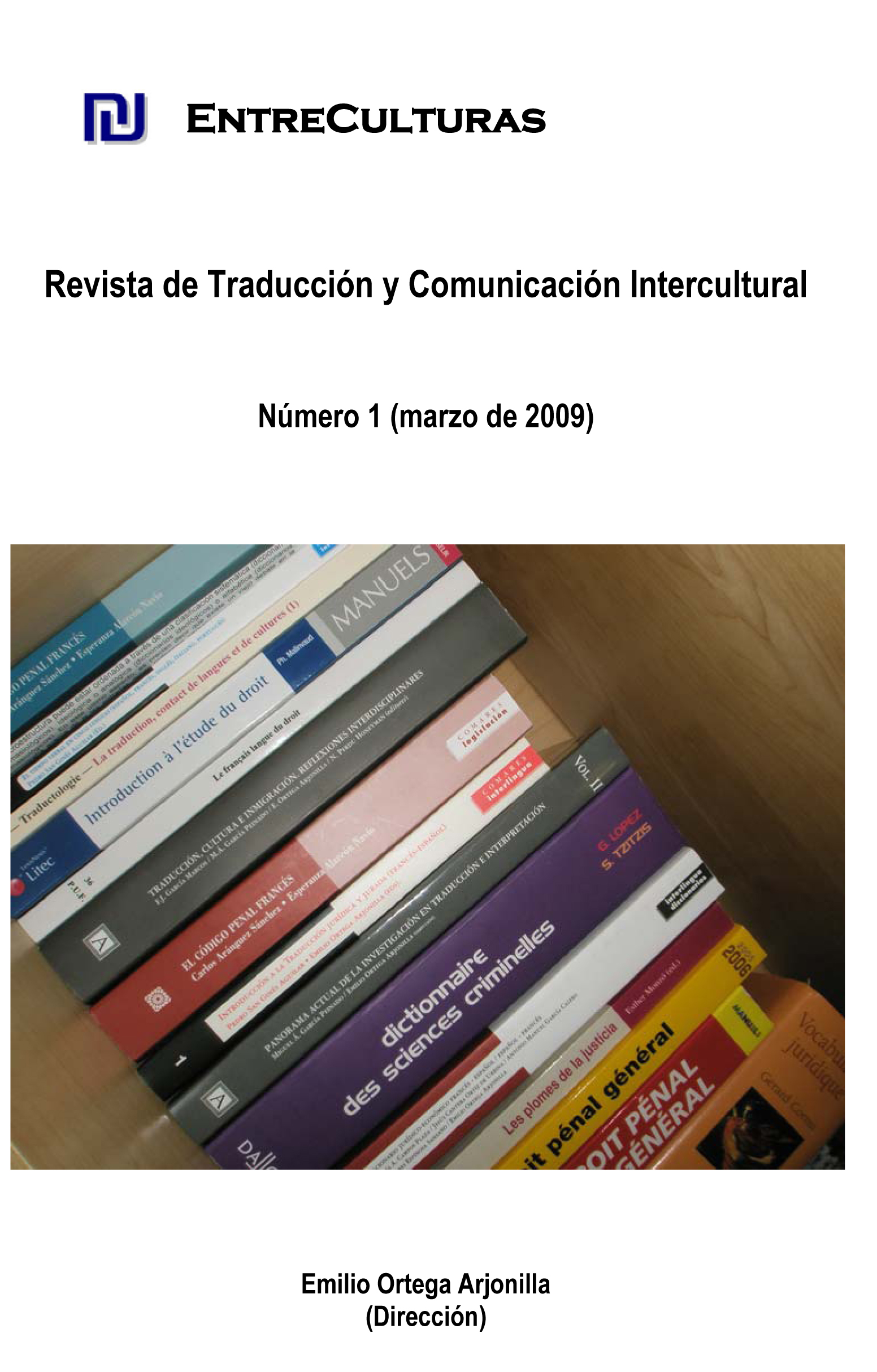¿POR QUÉ SE ESTUDIA TRADUCCIÓN E INTERPRETACIÓN EN ESPAÑA? EXPECTATIVAS Y RETOS DE LOS FUTUROS ESTUDIANTES DE TRADUCCIÓN E INTERPRETACIÓN
DOI:
https://doi.org/10.24310/Entreculturasertci.vi1.11888Keywords:
student, translation, interpretation, expectations, needsAbstract
This article aims to present certain conclusions on a very specific group, as is the profile of students wishing to study Translation and Interpretation. Therefore, the aim is to make an initial outline of the expectations and motivations of future Translation and Interpretation candidate students, by trying to identify their needs, fears, false conceptions and expectations.
Downloads
Metrics
References
ARRÉS LÓPEZ, E. (2005) El traductor autónomo en España: requisitos, introducción en el mercado laboral y captación de clientes. Proyecto de Fin de Carrera: Universidad de Granada.
BIGGS, J (2003) Teaching for Quality in Higher Education, 2nd edition, Buckingham
CALVO ENCINAS, E. Tesis doctoral (en fase de finalización). Análisis curricular de los estudios de Traducción e Interpretación desde la perspectiva del estudiantado. Universidad de Granada. Dirección a cargo de Dorothy Kelly.
----.(2006) “Orientación profesional para futuros licenciados de TeI: estrategias centradas en las necesidades del estudiantado”. En Estudios de Traducción: Problemas y Perspectivas. Bravo Utrera, S y García López, R. (Eds.) Universidad de Las Palmas de Gran Canaria: Servicio de Publicaciones.
GROTJAHN, R. (1987). “On the methodological basis of introspective methods”. En Færch, C. & Kasper, G. (Eds.), Introspection in second language research. Clevedon, England: Multilingual Matters.
KELLY, DOROTHY (2003) "La investigación sobre formación de traductores: algunas reflexiones y propuestas". In Emilio Ortega Arjonilla (dir.) Panorama actual de la investigación en Traducción e Interpretación. Granada: Atrio. Vol I: 585-596
---- (2005) A Handbook for Translator Trainers. Manchester: St Jerome.
MAYORAL ASENSIO, R. Ponencia invitada: “La formación de traductores: apuntes sobre su pasado, presente y futuro”. En Seminario La formación de traductores en el contexto universitario: crítica de la situación actual y algunas propuestas. Grupo de investigación AVANTI. 13 de febrero de 2004.
----. “Aspectos curriculares de la enseñanza de la traducción e interpretación en España”. En Aproximaciones a la traducción. Instituto Cervantes Virtual. Disponible en http://www.cvc.cervantes.es/obref/aproximaciones/mayoral.htm (30.11.06)
Downloads
Published
How to Cite
Issue
Section
License
All contents published in Entre culturas. Revista de traducción y comunicación intercultural are protected under the Creative Commons Attribution-NonCommercial-ShareAlike 4.0 International (CC BY-NC-SA 4.0) license. All about this license is available in the following link: <http://creativecommons.org/licenses/by-nc-sa/4.0>
Users can copy, use, redistribute, share and exhibit publicly as long as:
- The original source and authorship of the material are cited (Journal, Publisher and URL of the work).
- It is not used for comercial purposes.
- The existence of the license and its especifications are mentioned.
There are two sets of authors’ rights: moral and property rights. Moral rights are perpetual prerogatives, unrenounceable, not-transferable, unalienable, imprescriptible and inembargable. According to authors’ rights legislation, Entreculturas. Revista de traducción y comunicación intercultural recognizes and respects authors moral rights, as well as the ownership of property rights, which will be transferred to University of Malaga in open access. The property rights are referred to the benefits that are gained by the use or the dissemination of works. Entreculturas. Revista de traducción y comunicación intercultural is published in an open access form and it is exclusively licenced by any means for doing or authorising distribution, dissemination, reproduction, , adaptation, translation or arrangement of works.
Authors are responsable for obtaining the necessary permission to use copyrighted images.





7.png)
